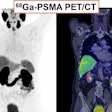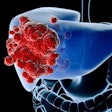Dear AuntMinnie Member,
Summer is drawing to a close, and there's no better sign of the changing of the seasons than the release of the semifinalists in the Minnies, our annual awards event recognizing excellence in radiology!
This year's list was drawn from nominations from our members, and we've compiled a list of over 200 candidates in 14 categories vying for the next stage of the competition. Now, our expert panel will get to work, selecting the finalists and then the winners in two rounds of voting. Winners will be announced in late October.
Curious about who made the cut? Visit minnies.auntminnie.com to find out. And thanks to everyone who submitted nominations!
PET for AD
More and more, PET has been demonstrating its value for dementia-related conditions, and one of the most devastating is Alzheimer's disease (AD). In a new study, researchers from the University of Pittsburgh used PET with a carbon-11-based radiopharmaceutical to shed new light on three phenomena that can lead to Alzheimer's: beta-amyloid plaque, tau protein neurofibrillary tangles, and neuroinflammation.
The researchers used PET to demonstrate how these three processes can synergistically interact with each other to determine dementia, a process that's been referred to as the cascade hypothesis. The theory suggests that Alzheimer's disease is a process that can begin decades before symptoms arise.
In other molecular imaging news, Israeli researchers found that PET/MRI was better than MRI alone for detecting prostate cancer, while a group from Switzerland found that performing a second PET/CT scan just before radiation therapy treatment can help identify new lesions.
Get these stories and more in our Molecular Imaging Community.
Infection control for ultrasound
The COVID-19 pandemic has put a focus on proper infection control in radiology, and nowhere is that focus more acute than in ultrasound.
Ultrasound has become a key tool in diagnosing and managing patients with COVID-19, but the modality's portability can be a drawback when scanners are being transported from patient to patient. Fortunately, proper infection control procedures can reduce risk significantly.
We're pleased to offer coverage of this important topic in our newest special report, Infection Control in Ultrasound. You'll find articles covering new tools that are available for cleaning equipment like ultrasound probes, as well as descriptions of the proper protocols for reducing infection risk.



















